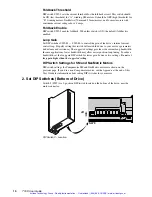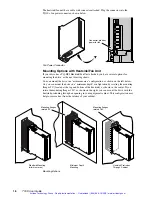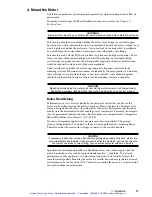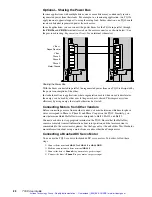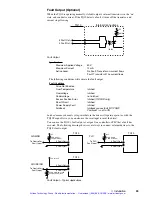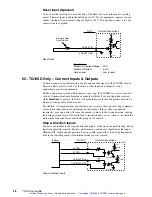
➁
Installation
19
This circuit may not protect the motor in every possible application. It works best in cases
where the temperature rise occurs slowly over a long period of time. In this situation, the
thermal sensor and motor windings will be at the same temperature. When the sensor and
windings reach the sensor’s threshold temperature, the sensor can trigger the overtempera-
ture circuit.
In cases where the temperature rise is caused by continuous peak current flowing—such as
a mechanical jam— the winding temperature may rise much more quickly than the sensor
temperature does. In this situation, the windings may be damaged from overheating
before
the sensor can trigger the overtemperature circuit.
Be careful not to overheat your motor during system tuning. Allow the motor to cool for
several seconds between test moves. Instability while tuning can cause rapid motor heating
and possible motor damage. A thermal switch may not protect the motor if the motor heats
up too quickly. Do not allow instability to persist longer than a few seconds. After each
incident of instability, allow the motor to cool for several minutes.
Connect Motor Phase Wires
Connect your motor’s phase wires and ground wire to the removable 7-pin
MOTOR
connector located on the bottom of the drive. The next drawing shows the location of each
terminal.
WARNING
Potentially hazardous voltages are present on motor connector terminals when power is
applied to the drive.
Ensure the connector is aligned correctly when inserted—and not misaligned by one
position.
123
V Bus +
Regen Resistor
V Bus -
Phase A
Phase B
Phase C
Motor Ground
Motor Connector
The terminal labeled
MOTOR GROUND
is connected internally to the
EARTH
terminal on
the drive’s AC power connector.
WARNING
DO NOT OMIT the
Motor Ground
connection. Internal failure of motor insulation can place
the motor frame at deadly potential if it is not properly grounded.
Artisan Technology Group - Quality Instrumentation ... Guaranteed | (888) 88-SOURCE | www.artisantg.com






